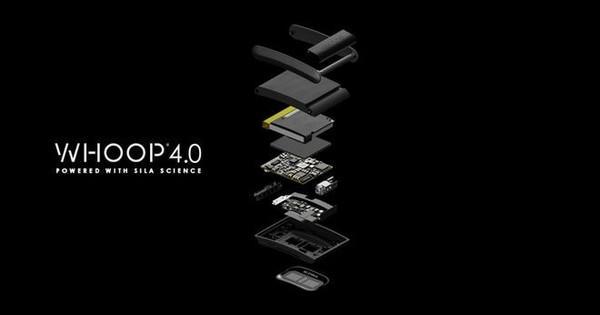As we all know, Mercedes-Benz G is a large-sized hardcore SUV with a weight of more than 2 tons. In order to drive such a huge body, Mercedes-Benz equipped it with a 4.0 V8 engine, but the fuel tank that provides energy for it is actually not as good as that of ordinary Mercedes-Benz. What's the difference, but what if the Mercedes-Benz G were to launch a pure electric version.

The Mercedes-Benz EQG concept car debuted at the Munich Motor Show in September 2021. Although the concept car is very close to the production version, Mercedes-Benz plans to start production in 2024 and launch it to the market in 2025. As a pure electric version of the Mercedes-Benz G-Class, the car's battery life will be the top priority. It is reported that the new car will use silicon anode batteries to increase the energy density of the battery by 20%-40%, thereby solving the problem of battery life.
It is reported that the supplier of Mercedes-Benz EQG may be Sila Nanotechnologies, a start-up company from California, USA. The company released Whoop Strap 4.0 last year, replacing graphite anodes with silicon anodes, which can increase the energy density of batteries by 20%-40%. Will improve battery life.
Next-generation solid-state batteries with high energy density are not free from existing power design ideas, but this imposes constraints on the battery charging rate and the need to increase the temperature during charging. Silicon anodes overcome these limitations, allowing faster charge rates from room temperature to low temperature, while maintaining high energy density, 10 times higher than the graphite anodes most commonly used in commercial lithium-ion batteries today
It is reported that the supplier of Mercedes-Benz EQG may be Sila Nanotechnologies, a start-up company from California, USA. The company released Whoop Strap 4.0 last year, replacing graphite anodes with silicon anodes, which can increase the energy density of batteries by 20%-40%. Will improve battery life.
Next-generation solid-state batteries with high energy density are not free from existing power design ideas, but this imposes constraints on the battery charging rate and the need to increase the temperature during charging. Silicon anodes overcome these limitations, allowing faster charge rates from room temperature to low temperature, while maintaining high energy density, 10 times higher than the graphite anodes most commonly used in commercial lithium-ion batteries today

However, the above performance is still in the laboratory. With the current technical level, if a silicon-based material is used as the battery anode instead of the existing graphite anode, the battery efficiency will be increased by 20%, and further optimization can increase the efficiency by 40%. It could make batteries lighter, safer, and more energy-dense. From the perspective of the situation, the silicon anode battery technology is still relatively certain, but it is estimated that it will take about two years for commercialization.
At present, the lithium battery anode commonly used in electric vehicles is mainly made of graphite, but the utilization rate of graphite is close to the theoretical limit. A power battery that uses more silicon in the anode than graphite produces more power, charges faster, and has a smaller carbon footprint than current batteries. This means that electric vehicles can reduce the number of cells used while maintaining the same range as today, thereby reducing the overall cost and size of the battery pack.
Judging from the actions of various manufacturers, silicon anode batteries should become the mainstream in the next few years. In 2019, Mercedes-Benz, as the lead investor, announced an investment in Sila Nano, with an investment scale of US$170 million; the previous year, BMW and Sila Nano established a long-term cooperation to jointly develop Sila Nano's silicon anode material for the automotive market. . Porsche also poured $100 million into another start-up, Group14, which also aims to develop and produce silicon-based anode batteries for high-performance vehicles.
In addition to higher battery efficiency and shorter charging time, the anode product will not make the manufacturing process more complicated. The silicon-based material anode will directly replace graphite, and the battery factory does not need to change the manufacturing process and manufacturing equipment. Lower frictional costs are also the reason why silicon anode batteries are favored by manufacturers. We can't say that silicon anode batteries will solve battery life anxiety like a savior, but compared with existing power batteries, it can still greatly improve the battery life of electric vehicles.
At present, the lithium battery anode commonly used in electric vehicles is mainly made of graphite, but the utilization rate of graphite is close to the theoretical limit. A power battery that uses more silicon in the anode than graphite produces more power, charges faster, and has a smaller carbon footprint than current batteries. This means that electric vehicles can reduce the number of cells used while maintaining the same range as today, thereby reducing the overall cost and size of the battery pack.
Judging from the actions of various manufacturers, silicon anode batteries should become the mainstream in the next few years. In 2019, Mercedes-Benz, as the lead investor, announced an investment in Sila Nano, with an investment scale of US$170 million; the previous year, BMW and Sila Nano established a long-term cooperation to jointly develop Sila Nano's silicon anode material for the automotive market. . Porsche also poured $100 million into another start-up, Group14, which also aims to develop and produce silicon-based anode batteries for high-performance vehicles.
In addition to higher battery efficiency and shorter charging time, the anode product will not make the manufacturing process more complicated. The silicon-based material anode will directly replace graphite, and the battery factory does not need to change the manufacturing process and manufacturing equipment. Lower frictional costs are also the reason why silicon anode batteries are favored by manufacturers. We can't say that silicon anode batteries will solve battery life anxiety like a savior, but compared with existing power batteries, it can still greatly improve the battery life of electric vehicles.

